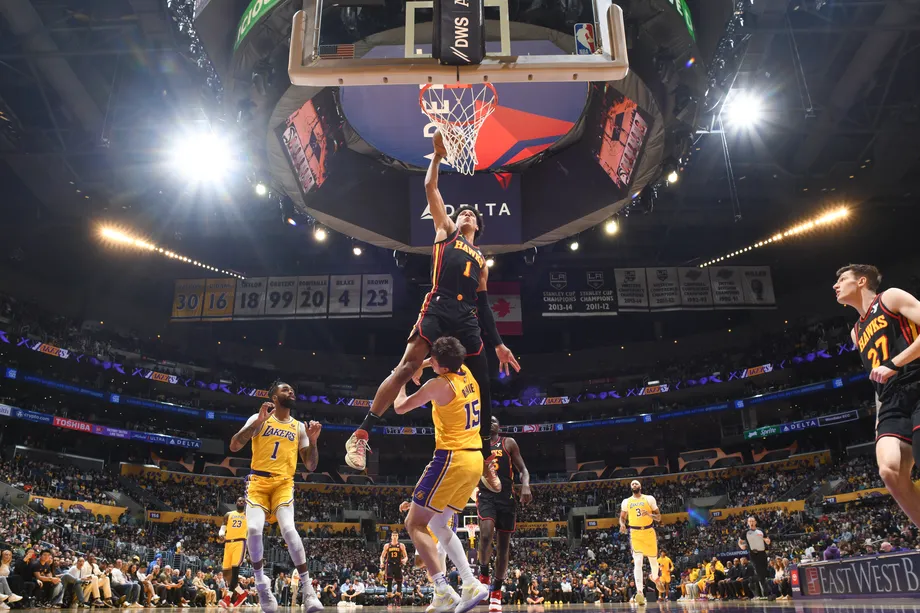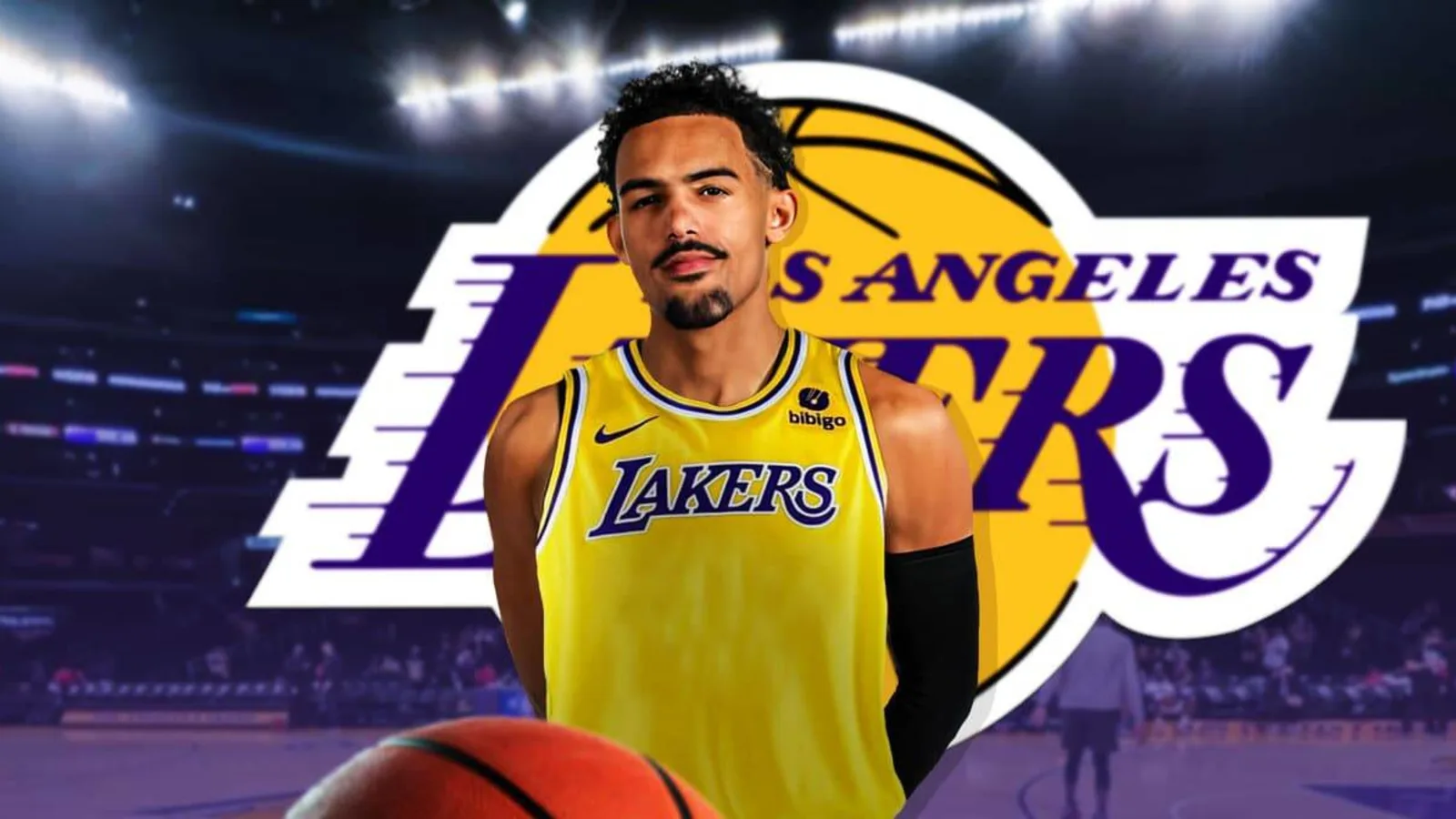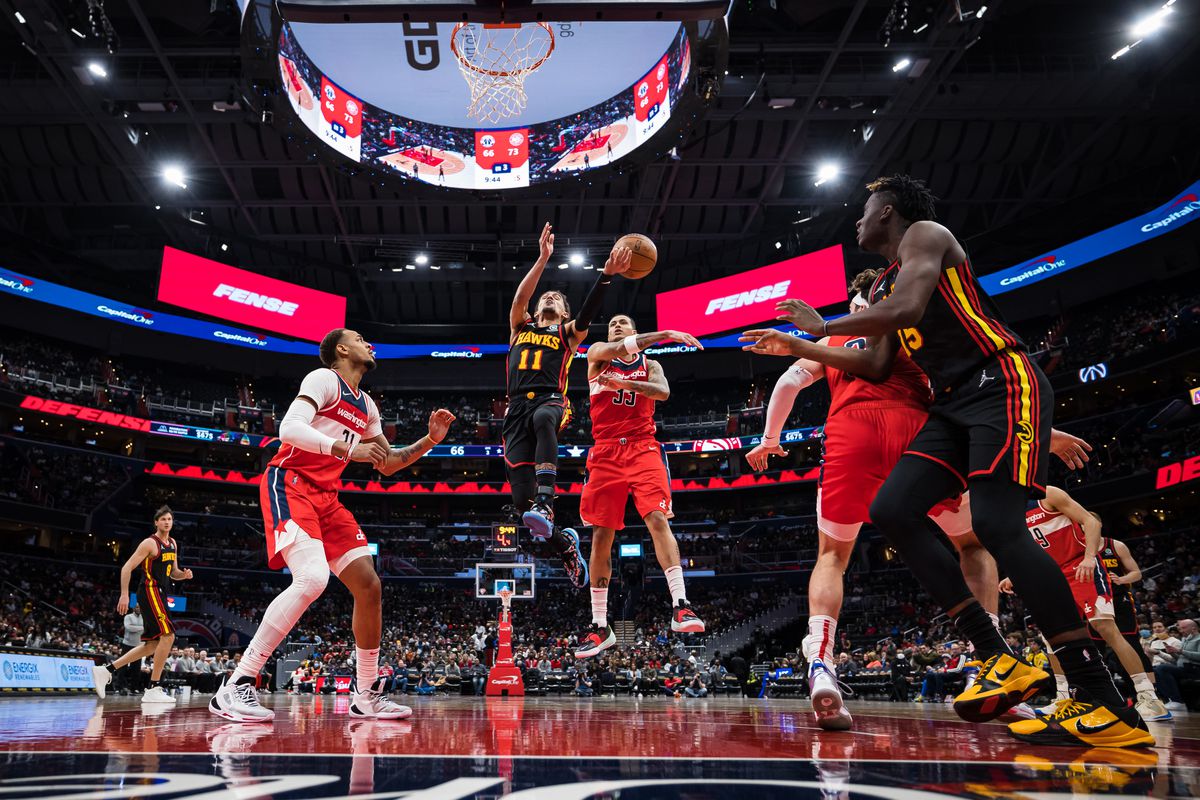
Injuries have not been kind to the Atlanta Hawks this season, however the last few weeks have been particularly rough.
Onyeka Okongwu missed 14 consecutive games with a toe sprain before returning in a limited capacity in Monday night’s loss against the Lakers.
Trae Young has been out since February 23rd with a torn finger ligament.
Kobe Bufkin has been out since March 3rd with a toe injury.
Saddiq Bey suffered a torn ACL on March 10th, ruling him out for the remainder of the season.
Jalen Johnson missed three games with an ankle sprain, returned for the next three, then re-injured the same ankle in the fourth quarter on Monday night.
Still, despite the injuries, the Hawks have managed to play well enough since the All-Star break to keep themselves in pole position for the 10-seed — and final spot — in the Eastern Conference Play-In Tournament. No, their schedule hasn’t exactly been a gauntlet, but it’s encouraging to see that there is still some fight left in this team after a long and frustrating season.
In typical Hawks’ fashion, the team went 6-6 in their first 12 games out of the break prior to Monday night’s loss in Los Angeles. Both their offense and defense have performed at about a league-average rate during this span, as they’ve ranked 14th in offensive rating (113.3) and 15th in defensive rating (112.7) over the past four weeks.
While it hasn’t been the most attention-grabbing stretch of Hawks’ basketball, the ball is still bouncing, and Atlanta should have (at least) one game of postseason basketball to look forward to once the regular season is over. Who knows what could happen if Trae Young gets healthy. For now, the Hawks just have to take things one game at a time.
Below, I’ve shared a few thoughts on the team’s recent form.
#1: The Points In The Paint Battle And A Rejuvenated Interior Defense
Prior to the All-Star break, the points in the paint battle was not one that typically played out in Atlanta’s favor. The Hawks ranked 14th in points in the paint per game (51.6), 28th in points allowed in the paint per game (56.0), and outscored their opponents in this area by more than five points just ten times through the first 55 games of the season — winning six out of those ten games.
On the offensive end, Atlanta did a good job generating shots from this area of the floor (ranking sevent in the league in paint-field goal attempts), however their efficiency left a lot to be desired, as they were just 27th in paint FG%*.
*Atlanta shot just 55.3% in the paint prior to the All-Star break
On the defensive end, their rim protection was a disaster, ranking dead last in the league in field goal attempts allowed in the restricted area and 25th in opponent restricted area FG% — the main culprit of their shoddy paint defense.
Since the All-Star break however, the Hawks have outscored their opponents in the paint by more than fives points in six out of their 13 games played, winning five out of these six games.
It’s no surprise that with Trae Young sidelined, the team has taken fewer threes and more shots from the interior. However, the offense hasn’t been the primary reason why they have won the paint battle more often as of late, as their efficiency in this area has actually dipped*, and they have scored 49.7 paint points per-game in their six wins, compared to 46.2 in their seven losses since the break — a difference, but not a very significant one.
*Atlanta is shooting just 51.7% in the paint since the break, the third lowest mark in the league (more on their interior finishing later)
In a welcome change of pace, it’s been Atlanta’s defense that’s been the driving factor behind their recent success in this area, as the Hawks have ranked sixth in opponent FG% in the restricted area, and 11th in points allowed in the paint per game* (48.0) since the break.
*They ranked fourth and sixth in these respective categories prior to Monday night’s loss
In they’re six wins since the break, they’ve allowed an impressive 41.7 points in the paint per game, compared to 53.4 in their 7 losses, showing just how important it’s been for Atlanta to control this area of the floor in recent weeks.
While it has to be noted that the Hawks faced a pretty favorable schedule coming out of the All-Star break, and that their defense has been strained in recent games against tougher opponents*. They turned in a stellar defensive performance against the Clippers (currently third in FanDuel’s NBA Title odds) on Sunday night where they allowed just 30 points in the paint, feeding the notion that when everyone is locked in, this team can scrap on the defensive end of the floor.
As soon as Harden gets into the paint, he’s surrounded by four Hawks’ defenders. Jalen is playing the dump off to Theis. Forrest is waiting to disrupt a potential kick-out to Mann in the corner. Atlanta is happy to concede 12-foot floaters to PJ Tucker.
Then, when the ball bounces back to Los Angeles for another bite at the apple, Hunter does a good job running Coffey off the three-point line, Bogdanovic and Bruno Fernando wall off the paint, and Coffey settles for a 17-footer.
In limited game time, Wesley Matthews has played some feisty defense as of late, and he deserves a shout for being in position to take a charge in the play below — as this forces Harden to euro-step, giving Capela enough time to recover and make a play on his former teammate.
This clip has made the rounds on X and for good reason, as it was an excellent play from De’Andre Hunter to deny Theis at the rim.
Opponent three-point shooting will vary from game to game, and in general, it is tougher to control than the opponent’s ability to score at the basket. For this reason, the mark of a good defense is typically one that is able to defend the paint — a statement validated by the fact that nine of the top ten teams in defensive rating this season all rank in the top-ten in points allowed in the paint.
After getting torched in this area to start the season, the Hawks have shown that they are capable of defending the paint since the All-Star break, and must continue to prioritize their interior defense the rest of the way.
#2: Missed Bunnies Continue To Plague The Offense
I referenced Atlanta’s woeful interior finishing in the section above, and this has been an area of the floor that has plagued their offense all season long.
The Hawks rank 27th in rim shooting accuracy, converting 62.7% of their shots at the rim this season per pbpstats. And they’ve been worse since the All-Star break, converting a measly 60.8% of their shot-attempts at the rim — the third lowest mark in the league.
Looking at the individual player’s rim shooting numbers in the tables above, you can see that Clint Capela and Dejounte Murray have been the two main culprits when it comes to Atlanta’s struggles from this area as of late. These two have accounted for roughly 41% of the team’s total shot attempts at the rim since the All-Star break, and yet theyare converting them at a combined 54.7% clip. Not pretty, to say the least.
Additionally, Jalen Johnson, who has accounted for 15% of the team’s rim-attempts since the break, is shooting nearly 5% worse from this area of the floor. Bogdan Bogdanovic is just 9-for-20, after shooting 57.2% at the rim prior to the break.
While some of Atlanta’s misses have simply been head-scratchers where they do everything right but the finish, there’s also no denying that they have sincerely missed Oyneka Okongwu’s impact in this area.
Not only is Okongwu the most efficient scorer out of Atlanta’s centers, but he is also the best passer in the group as well. In his return to action against the Lakers on Monday, it didn’t take him long to remind us of this ability — teeing up a Jalen Johnson slam early in the second quarter.
Per cleaningtheglass, Atlanta is shooting 65.8% at the rim when Okongwu is on the floor this season (49th percentile relative to other lineups with at least 100 minutes played), compared to just 60% when he is off of the floor (ninth percentile) — the difference between an average rim finishing team and a ghastly one*.
*Another interesting nugget from cleaningtheglass, lineups with Trae Young on and Okongwu off are converting just 61.5% of their shots at the rim (16th percentile), showing just how vital Okongwu is to the team’s ability to finish in this area.
Okongwu is adept at running dribble handoffs, and he has emerged as a threat from the corners this season* — two things that draw the player guarding him away from the basket. When that player is also the opposing team’s best rim-protector (as many 5’s are), the Hawks have an easier time finishing around the basket.
*Shooting 44% (!!) on corner-threes this season
With the new-fangled officiating tweaks depressing offensive efficiency around the league, it’s more important than ever for the Hawks to convert their shots at the rim — Capela and Murray especially. However, with Onyeka Okongwu returning to the rotation, I’m optimistic that we’ll see an uptick in the team’s rim-shooting efficiency over the remainder of the season.
#3 De’Andre Hunter Looking Confident As A Scorer
After starting in 224 out of his first 230 games in the NBA, De’Andre Hunter has come off the bench in his last 20 games for the Hawks after returning from a knee injury — a shift that he has taken in stride.
Hunter recently told The Athletic (subscription required):
“I feel like, you know, some dudes may go to the bench and pout about it, feel bad about it or sad about it. But at the end of the day, as long as I’m on the court, I feel like I can make an impact, whether that’s coming off the bench or starting. So I’m coming off the bench now, but that’s not going to stop me from producing on the court.”
Hunter’s production has backed up his words. Over his first 24 games of the season (all starts), Hunter averaged 14.9 points per game, shooting 46% from the floor (on 11 attempts per-game) and 40.4% from three (on 4.8 attempts per game) in 30.3 minutes a night.
Since coming off the bench, he’s averaged 16 points per game, while shooting 49.1% from the floor (on 11.2 attempts per-game) and 42% from three (on five attempts per-game) in 26.1 minutes a night.
Coming off the bench has allowed him to play more of his minutes against opposing team’s bench units, and his confidence as a scorer seems to have soared as a result.
While his jump shot has fallen a bit more often in recent weeks, the area that’s most impressed me about Hunter’s game recently has been the improvement in his rim-finishing.
Over the course of his career, Hunter has never been particularly efficient at the basket, with his career rim-shooting efficiency hovering around 60%. However over his last 20 outings, he has converted his rim-attempts at a stunning 75% clip — a drastic turnaround.
Hunter has looked far more confident finishing through contact, upping his and-one percentage* to 34% this season after hovering around 20% through his first four seasons in the league.
In this possession from the Clippers’ game, Hunter (with the help of a mini hip check from Garrison Matthews) loses Kawhi curling around the off-ball screen, then muscles through Mann for an and-one finish.
In this possession against Utah, Hunter is isolated on rookie Brice Sensabaugh, uses a quick jab step to get the rookie off his feet, then blows past him for the score plus the foul.
At 6-foot-8 and 225 pounds, Hunter is a large individual, and it’s been really encouraging seeing him take advantage of his size to bully smaller defenders in recent weeks. I’m curious to see if he can sustain this aggression going forwards.
#4 Vit Krejci Can Ball
Even with the slew of injuries to Atlanta’s rotation, Quin Snyder raised a few eyebrows when he thrust two-way forward, Vit Krejci, into the Hawks’ starting lineup for the past 6 games.
Krejci, the 37th overall pick in the 2020 draft, made 29 appearances* for the Hawks last season and was a member of Atlanta’s summer league squad, but he was a free agent before the team picked him back up on a two-way in December.
In 13 appearances in the G-League this season, he averaged 8.9 points, 5.3 rebounds and 5.0 assists, while shooting 40.2% from the floor and 27.5% from downtown — good but not great numbers.
Still, watching Krejci play with the big boys over the past few games, there’s something that appeals to me about the way he plays. Though his stat lines won’t jump off the score-sheet, averaging a meager 5.2 points*, 2.7 assists, and 1.3 rebounds in 25.2 minutes a night as a starter, Krejci is a terrific passer for a player his size, doesn’t turn the ball over, and has a knack for keeping the ball moving on offense.
*11/27 (40.7%) from the floor, 5/16 (31.3%) from three
In the possession below, he executes a nice give-and-go, setting up Jalen Johnson for an easy two.



Be the first to comment